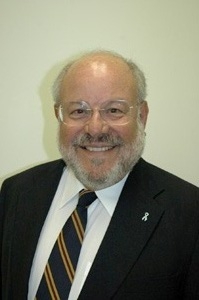This Is What A New Space Arms Race Will Look Like Kamikaze satellites, orbital lasers, and anti-satellite missiles--
(Image by YouTube, Channel: Radio Free Europe/Radio Liberty) Details DMCA
"Let's be clear: Deploying weapons in space crosses a threshold that cannot be walked back," stated retired U.S. Army Colonel John Fairlamb in a piece in the The Hill, the Washington, D.C. news website.
Fairlamb knows the weaponization of space issue. His background includes being International Affairs Specialist for the Army Space and Missile Defense Command and Military Assistant to the U.S. Secretary of State for Political Military Affairs. He is familiar with war first-hand: he was a company commander in Vietnam. He holds a doctorate on "Comparative Defense Policy Analysis."
"Given the implications for strategic stability, and the likelihood that such a decision [to deploy weapons in space] by any nation would set off an expensive space arms race in which any advantage gained would likely be temporary, engaging now to prevent such a debacle seems warranted," wrote Fairlamb in his opinion column on February 4th in The Hill. click here
The piece was headed: "The US should negotiate a ban on basing weapons in space."
"It's time," Fairlamb wrote, "for arms control planning to address the issues raised by this drift toward militarization of space. Space is a place where billions of defense dollars can evaporate quickly and result in more threats about which to be concerned. Russia and China have been proposing mechanisms for space arms control at the United Nations for years; it's time for the U.S. to cooperate in this effort."
Indeed, if weapons are deployed in space -- and for decades, including during the Reagan administration's "Star Wars" push, now likely again with the Trump administration's creation of a U.S. Space Force and its mission to "dominate" space -- there will be no return.
Space weaponization "cannot be walked back."
And the world is at a crossroads.
Russian Foreign Minister Serge Lavrov two weeks ago called tor talks to create an "international legally binding instrument" to ban the deployment of "any types of weapons" in space. click here
Lavrov declared: "We consistently believe that only a guaranteed prevention of an arms race in space will make it possible to use it for creative purposes, for the benefit of the entire mankind. We call for negotiations on the development of an international legally binding instrument that would prohibit the deployment of any types of weapons there, as well as the use of force or the threat of force."
He made the statement on April 12th, the International Day of Human Space Flight, marked this year by the 60th anniversary of Russian Yuri Gagarin's space flight, the first by a person in space.
The U.S., the United Kingdom and the then Soviet Union joined decades ago in drafting the Outer Space Treaty of 1967 that designated space as a "global commons" for peaceful purposes. The treaty bans the deployment of weapons of mass destruction in space. It's been signed by most nations on Earth.
Russia and China-along with U.S. neighbor Canada-have led in a move to expand the Outer Space Treaty by outlawing the deployment of any weapons in space.
During the period of Reagan's "Star Wars" (officially named the Strategic Defense Initiative), and in years since, the U.S. has been working on developing space weaponry that has included hypervelocity guns and particle beam and laser weapons.
The Prevention of an Arms Race in Outer Space (PAROS) treaty has been pushed by Canada, Russia and China to broaden the Outer Space Treaty.
(Note: You can view every article as one long page if you sign up as an Advocate Member, or higher).





